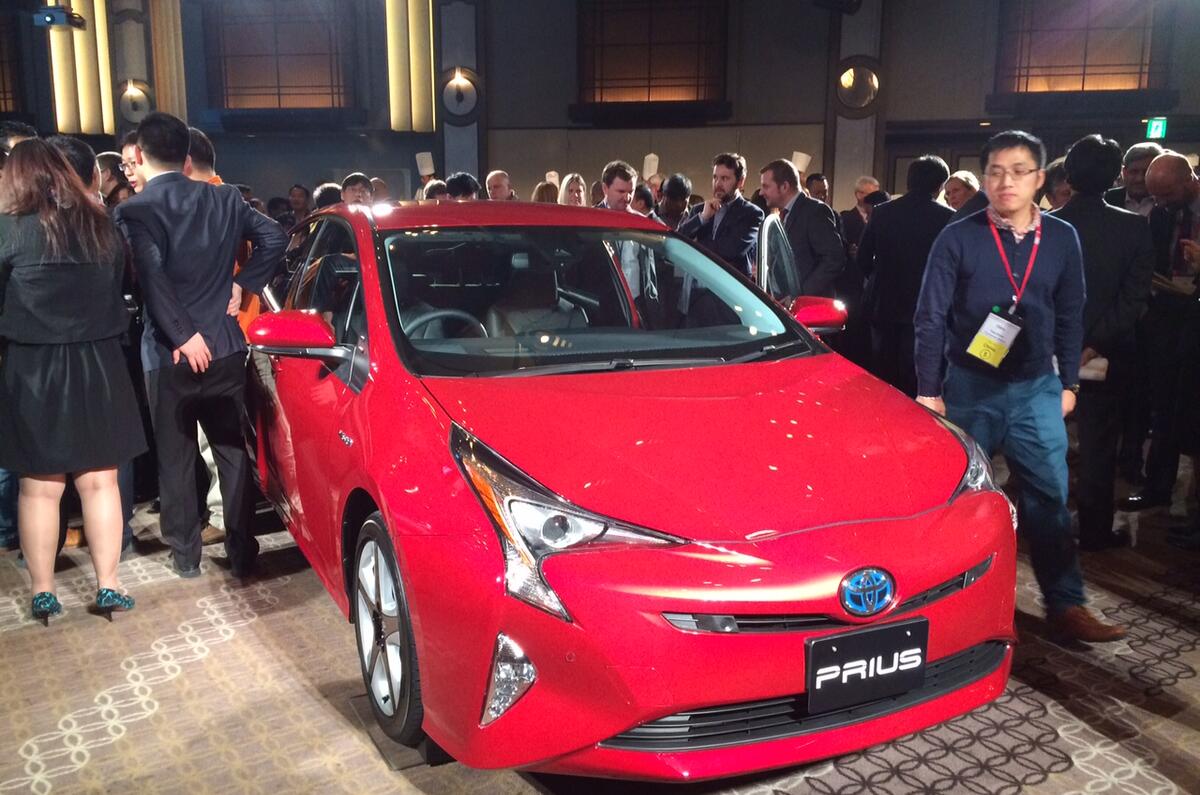Stole a quick chat with Shunsaku Kodama, chief designer of the fourth-generation Toyota Prius, at the Japanese company’s preview event ahead of the Tokyo motor show.
The Prius has always been a divisive car, but there can be little doubt that it is a significant one that keeps pushing the boundaries when it comes to fuel economy and emissions.
This new version, due on the forecourts next year, is vitally important as Toyota faces a growing threat from a host of hybrid and electric vehicles. The Prius, too, is part of an ever-expanding line-up of alternatively fuelled Toyotas that includes the new Toyota Mirai fuel cell vehicle.
Kodama-san explains that the Prius and Mirai were not cut from the same cloth, even if their final designs look similar: “When we were developing the cars it wasn’t intended that we would make a common design.
“The two designs were worked on according to their own design elements, but they are both eco-friendly green cars and when the design goes together with the efficiency of what the shape can offer, it kind of ends up in the same place.”
The three key facets underpinning the Prius’s design were: evolving the trademark triangular silhouette, creating a “stylish and sporty” look with a low centre of gravity around the new TNGA platform and making the front and rear ends as clean as possible in terms of aerodynamics.
The change in shape of the Prius is partly informed by the adoption of Toyota’s brand new TNGA platform underneath the car. It’s helped to enable a longer car with a lower centre of gravity and more interior space.
“TNGA brings more benefits than difficulties that I can think of,” says Kodama, “For example, we were able to lower the front by 70mm.”
Inside, too, it feels more spacious. Kodama explains: “The roof line is lower compared to the previous generation by 20mm, however, the base of the front seats are lower by 55mm, so that gives more headroom. The head clearance in the back is also increased over the third-generation Prius. There is more of a spacious feeling in the cabin.”






Join the debate
Add your comment
Um...
I really dislike Toyota/Lexuses new design language
But this weird 'slashed' design that Toyota and Lexus are going for at the moment- it doesnt work and is the reason you see so few new Lexuses on the roads.
@CWBROWN